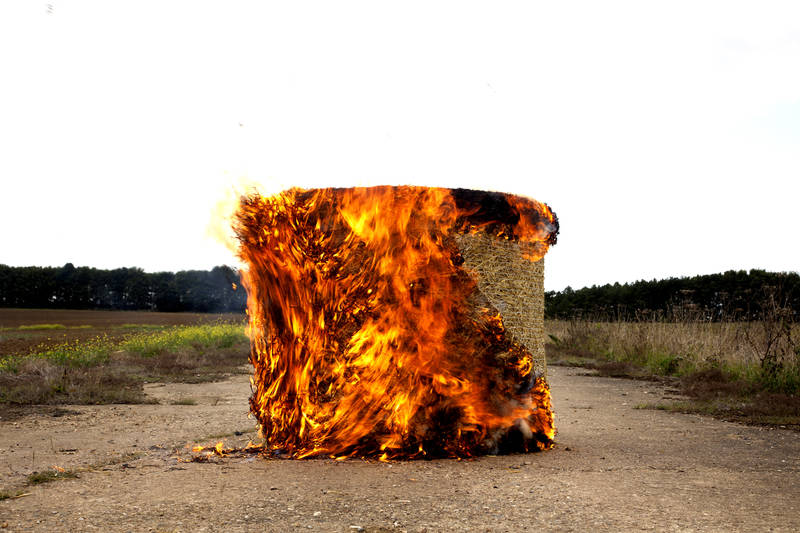The Bright Field
September – November 2015
The Bright Field explores contemporary responses to landscape through the practice of a painter, photographer, ceramicist, multimedia artist and filmmaker. The exhibition investigates our relationship to our physical environment and landscape as a location for narrative and meaning; ideas explored include ecology, energy use, perception, memory and time.
The artwork is linked by its relationship to the Romantic concept of the Sublime which has been re-imagined in a 21st century context. The Sublime traditionally suggests an engagement with nature as infinitely powerful and terrible, positioning humanity as witness to the awesome beauty of nature’s spectacle. The works in the exhibition suggest that there is now a shifting dynamic in this power relationship and that we are no longer passive observers. In contemporary media narratives of ecology and ecological disaster, we tremble before our capacity to destroy nature. However, with rising fears about environmental catastrophe, nature has reappeared as a limit to human power, wealth and progress. The works in this exhibition explore this shifting dynamic.
The photographer Gina Glover shows work from 2 different series. The Metabolic Landscape depicts buildings created to extract natural resources from the environment in order to convert them into energy. The photographs ask questions about the relationship between the people living in an area and the functional architecture of energy extraction that surrounds them. The exhibition also includes 3 photographs from the series Melt of sublimely beautiful ice mountains in Greenland and Iceland.
The multi-media artist Jessica Rayner exhibits video and installation works including 365 Faces of the Sun, a projection of 365 photographs of the sun, many of which were sourced from NASA, the US space agency. The piece reveals an extraordinary range of different colours and surfaces and explores our relationship with the star that is the source of light on earth, yet is usually impossible to view without fear of harming our sight.
Anthony Whishaw RA’s paintings draw upon the tradition of the sublime in order to explore an immersion in the elements. His canvases are a sensory response to nature’s forces created using the language of abstraction. In Whishaw’s landscapes there are no definable limits and edges beyond the frame of the canvas. These paintings are his very large-scale works from the early and late periods of his career.
Part document, part fiction, the film Blue Hills by Kay Walsh maps both the external landscape of the Scottish Highlands and an internal journey in search of a secret. The film slowly unfolds as we move through the landscape offering glimpses of narratives and possible meanings. Blue Hills explores the creation of a secret hide-away that is legendary in the Cairngorms and has remained hidden for over 60 years.
Toby Duncan’s wall-based ceramics consist of intensely physical, lavishly made, yet intimate objects. Part painting and part sculpture, they allude to food, weather, geological specimens, microscopic structures, historic Japanese painting, maps, and the patterns in deep space. The pieces call upon the viewer’s personal associations to create their own individual meanings.
Ackroyd & Harvey use grass as a living photographic medium; in controlled lighting conditions, grown from seed on vertical surfaces, grass has an extraordinary capacity to record complex photographic images through the production of chlorophyll. Grazing the Green Belt will be created especially for The Bright Field and last only for its duration, provoking questions about nature and our desire to preserve and control it.
Alex Duncan's work juxtaposes the man made with the natural, inviting us to question what is 'real' and drawing attention to the complexities of contemporary experience. He uses the aesthetics of model making or film set replicas in order to highlight environmental and ecological issues. Coveconsists of thousands of 'pebbles' that Duncan has collected from rocky coves, inlets and slips and bears witness to the power of the ocean and our capacity to change 'the natural order'.
The exhibition was curated by Emily Glass especially for OBS Gallery.


























